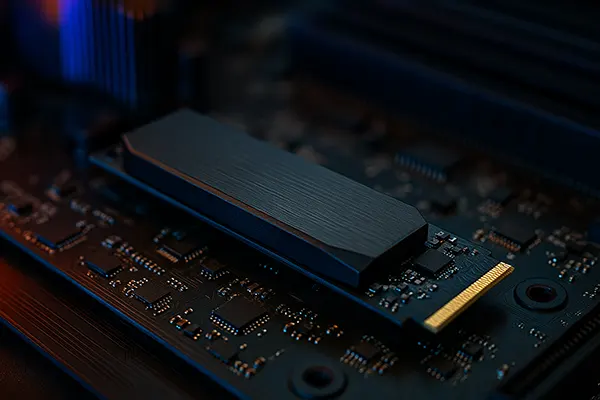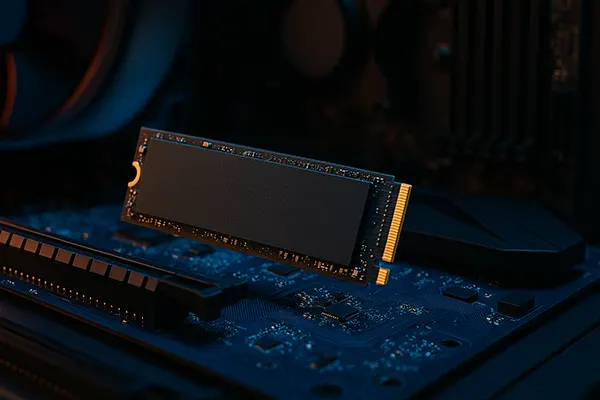Virtual Memory Crisis: How NVMe 5.0 SSDs Are Reshaping PC Architecture

By early 2025, NVMe 5.0 SSDs are rapidly transitioning from high-end workstations to mainstream desktops and laptops. With data-hungry applications like real-time AI processing and ultra-high-resolution gaming becoming commonplace, the demand for faster, more efficient memory architecture has never been more pressing. The fifth generation of NVMe promises seismic shifts in storage capabilities—redefining how personal computers manage virtual memory, performance loads, and multitasking operations.
Breakthrough Speeds and System Responsiveness
NVMe 5.0 offers a theoretical bandwidth of up to 14 GB/s, doubling what NVMe 4.0 delivered. This leap in throughput transforms system responsiveness, particularly in areas like data-intensive simulations, high-speed rendering, and AI-driven analytics. Where traditional SSDs might struggle under the weight of parallel data requests, NVMe 5.0 handles them effortlessly, reducing queue bottlenecks and latency to nearly negligible levels.
Users of Windows 11 and Linux kernels from version 6.x onwards have reported significant performance boosts when deploying NVMe 5.0 drives in place of older storage interfaces. Benchmark suites such as CrystalDiskMark and PCMark show reduced I/O wait times and quicker boot sequences, affirming these drives’ readiness for next-gen computing demands.
Another crucial benefit is sustained write performance. Unlike earlier SSDs that throttled during extended transfers, NVMe 5.0 maintains stable speeds, making it highly suitable for large-scale video editing, 3D modelling, and continuous data streaming.
How Virtual Memory Management Is Changing
Operating systems are evolving to keep pace with storage advancements. NVMe 5.0’s low-latency characteristics enable more aggressive paging strategies and real-time memory swapping, effectively reducing reliance on physical RAM. In Windows 11, for instance, virtual memory algorithms now detect NVMe 5.0 as a high-speed cache partner rather than just fallback storage.
Virtual memory systems are also smarter. With integrated memory management units (MMUs) and support for direct memory access (DMA) via PCIe Gen 5 lanes, PCs can offload certain processing tasks directly to the SSD, improving parallelism and multitasking efficiency. This architecture closely mirrors server-grade setups, now making its way into consumer machines.
Even gaming rigs benefit: background processes like updates, logs, and shader caching run more efficiently, freeing up active memory resources. These seemingly minor changes yield noticeable improvements in gameplay smoothness and load times, especially in open-world or texture-heavy environments.
Real-World Performance in Gaming and AI Workloads
The integration of NVMe 5.0 drives has already changed how gamers and AI professionals work. Titles like “Cyberpunk 2077: Phantom Liberty” and “Alan Wake 2” load assets nearly instantaneously, even during fast travel or texture streaming events. Reviewers at TechPowerUp and Tom’s Hardware confirmed frame pacing improvements and eliminated stutter caused by asset loading from storage.
In AI workflows, NVMe 5.0 plays an increasingly important role in local model training. Developers running large transformer models like LLaMA or GPT-based frameworks on edge devices gain faster swap times and model checkpointing, minimising downtime and improving training loop efficiency. Python libraries like HuggingFace Transformers or TensorFlow now integrate NVMe-aware caching systems to make the most of these advances.
For multi-user environments or streamers, NVMe 5.0 reduces content export times dramatically—4K footage that once took 8 minutes to write now finishes in under 3 minutes. These optimisations are vital as platforms like Twitch and YouTube raise quality standards for real-time encoding and rapid post-processing.
NVMe 5.0 in Compact and Mobile Devices
Manufacturers are now embedding NVMe 5.0 modules into ultra-thin laptops and gaming handhelds. ASUS, MSI, and Lenovo have released models like the ROG Zephyrus G16 and ThinkPad X1 with integrated PCIe 5.0 storage, targeting creators and professionals on the go. These devices match desktop speeds while keeping thermal profiles manageable through dynamic bandwidth scaling.
Battery life, often seen as a limitation, is now being preserved thanks to advanced power states (APST) supported by NVMe 5.0. These enable SSDs to operate at reduced voltages during idle cycles, contributing to longer usage time without sacrificing performance bursts when needed.
Even entry-level systems now benefit from trickle-down innovation. NVMe 5.0 drives with DRAM-less controllers and HMB (Host Memory Buffer) support are arriving under €100, enabling faster boot times and multitasking even in budget-friendly laptops and desktops.

Implications for Future System Design
As NVMe 5.0 becomes standard, system architecture must evolve. Motherboards now integrate direct PCIe Gen 5 pathways to SSD slots, reducing latency further. Vendors like Gigabyte and ASRock are already releasing boards with reinforced slots and passive heatsinks optimised for sustained NVMe 5.0 workloads. These developments align with Intel’s Arrow Lake and AMD’s Ryzen 8000 platforms, both of which support multiple Gen 5 lanes natively.
Software developers are also adjusting. Game engines like Unreal Engine 5 and Unity now include IO pipelines designed to leverage fast NVMe storage, bypassing CPU for certain asset decompressions. The “DirectStorage” API by Microsoft is now NVMe 5.0-ready, allowing developers to load textures and assets directly to the GPU in under 2 ms—a dramatic improvement over SATA SSDs or even older NVMe versions.
Cooling and form factor are the next frontiers. NVMe 5.0’s high throughput generates significant heat, prompting a rise in M.2 SSDs with vapour chamber cooling or compact fan-based modules. PC builders must now plan thermal solutions as carefully as they would for CPUs or GPUs, especially in small-form-factor (SFF) cases where airflow is constrained.
The Broader Ecosystem Transformation
The rise of NVMe 5.0 storage is leading to a broader rethinking of PC ecosystems. Storage is no longer a passive component—it now plays a central role in performance and responsiveness. Vendors are beginning to bundle NVMe 5.0 with AI-ready chipsets and DDR5 RAM to create cohesive performance packages.
Additionally, enterprises adopting edge computing and hybrid AI systems increasingly rely on NVMe 5.0 for local inferencing and low-latency decisions. From autonomous vehicles to healthcare diagnostics, the low access times and reliability of these drives are key to real-time operations.
In the long term, users can expect NVMe 5.0 to spark new software paradigms. Just as GPUs birthed CUDA and parallel frameworks, SSDs this fast could inspire next-gen storage-aware apps that offload workloads intelligently across CPU, GPU, and SSD pipelines.




